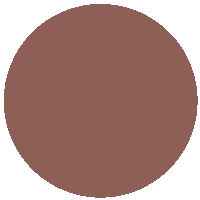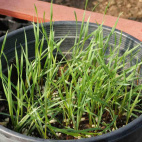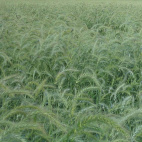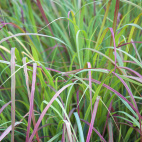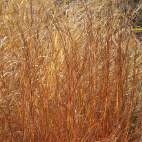Color
Availability
USDA Zone
Region
Type
Duration
Season
Germination
Soil
Sunlight
Height
Narrow Your Search
Color
Availability
USDA Zone
Region
Type
Duration
Season
Germination
Soil
Sunlight
Height
US Native Grass Seeds
The species on this page are not all technically classified as grasses, but the average gardener would probably call them "grass". Here you will find a variety of seeds of native grasses, sedges, reeds, and rushes. You might not think of grass as being as beautiful as flowers, but some of these wild grasses really are beautiful in their own way. Many of the native prairie grasses turn color in autumn, and the rusty bronze color of the stems adds a real fall aura to the planting. Winter birds benefit from the wild grass seeds, and small animals use the thick undergrowth for cover. The biomass of the grass is also the primary source for fuel when a prairie planting undergoes a planned burn.
-
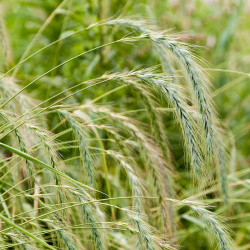 Canada Wild Rye Seeds
Elymus canadensis
Not to be confused with agricultural rye, this cool-season native grass is one of the most popular species for native plantings. It is easy to grow, it adapts to a wide variety of soils, it is winter hardy, and it is affordable - what more could you want in a grass?Quick Viewx
Canada Wild Rye Seeds
Elymus canadensis
Not to be confused with agricultural rye, this cool-season native grass is one of the most popular species for native plantings. It is easy to grow, it adapts to a wide variety of soils, it is winter hardy, and it is affordable - what more could you want in a grass?Quick ViewxCanada Wild Rye Seeds
Elymus canadensis
Not to be confused with agricultural rye, this cool-season native grass is one of the most popular species for native plantings. It is easy to grow, it adapts to a wide variety of soils, it is winter hardy, and it is affordable - what more could you want in a grass?
$3.75 Pkt - $5.96 / Oz -
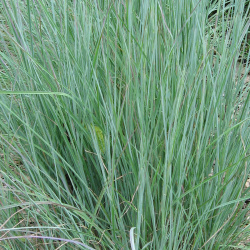 Little Bluestem Seeds
Schizachyrium scoparius
This warm-season perennial is probably the most popular native grass for short prairies. It is known as Bluestem because of the characteristic blue-purple stems at the base of the plant. These stems change into a bright copper color in the fall and persist as a food source for birds through the winter.Quick Viewx
Little Bluestem Seeds
Schizachyrium scoparius
This warm-season perennial is probably the most popular native grass for short prairies. It is known as Bluestem because of the characteristic blue-purple stems at the base of the plant. These stems change into a bright copper color in the fall and persist as a food source for birds through the winter.Quick ViewxLittle Bluestem Seeds
Schizachyrium scoparius
This warm-season perennial is probably the most popular native grass for short prairies. It is known as Bluestem because of the characteristic blue-purple stems at the base of the plant. These stems change into a bright copper color in the fall and persist as a food source for birds through the winter.
$3.48 Pkt - $6.84 / Oz -
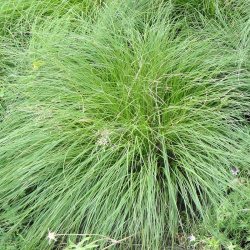 Northern Dropseed Seeds
Sporobolus heterolepis
This native perennial grass forms a big round mound of fine-textured foliage. It does not like to be soggy but can grow in most other soil conditions. This plant is a warm-season grass and is quite winter hardy.Quick View$3.48 Pkt - $24.00 / Oz
Northern Dropseed Seeds
Sporobolus heterolepis
This native perennial grass forms a big round mound of fine-textured foliage. It does not like to be soggy but can grow in most other soil conditions. This plant is a warm-season grass and is quite winter hardy.Quick View$3.48 Pkt - $24.00 / Oz -
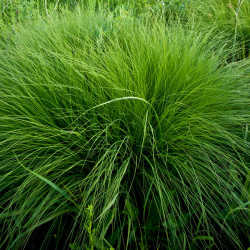 Rough Dropseed Seeds
Sporobolus asper
This native grass has fine delicate leaves and prefers to grow in light dry soil during the warmest months of the year. This perennial grows to a medium height and is at home as a member of a short grass prairie community.Quick View$2.98 Pkt - $7.09 / Oz
Rough Dropseed Seeds
Sporobolus asper
This native grass has fine delicate leaves and prefers to grow in light dry soil during the warmest months of the year. This perennial grows to a medium height and is at home as a member of a short grass prairie community.Quick View$2.98 Pkt - $7.09 / Oz -
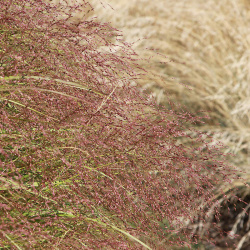 Out Of Stock
Sand Love Grass Seeds
Eragrostis trichodes
Appropriately named, this warm-season grass thrives in the sandy soil of open prairies and fields. This ornamental bunchgrass is valued for its purplish inflorescence and graceful, arching habit, and it's resistance to heat and drought.Quick View$2.98 Pkt - $11.47 / Oz
Out Of Stock
Sand Love Grass Seeds
Eragrostis trichodes
Appropriately named, this warm-season grass thrives in the sandy soil of open prairies and fields. This ornamental bunchgrass is valued for its purplish inflorescence and graceful, arching habit, and it's resistance to heat and drought.Quick View$2.98 Pkt - $11.47 / Oz
The species on this page are not all technically classified as grasses, but the average gardener would probably call them "grass". Here you will find a variety of seeds of native grasses, sedges, reeds, and rushes. You might not think of grass as being as beautiful as flowers, but some of these wild grasses really are beautiful in their own way. Many of the native prairie grasses turn color in autumn, and the rusty bronze color of the stems adds a real fall aura to the planting. Winter birds benefit from the wild grass seeds, and small animals use the thick undergrowth for cover. The biomass of the grass is also the primary source for fuel when a prairie planting undergoes a planned burn.
